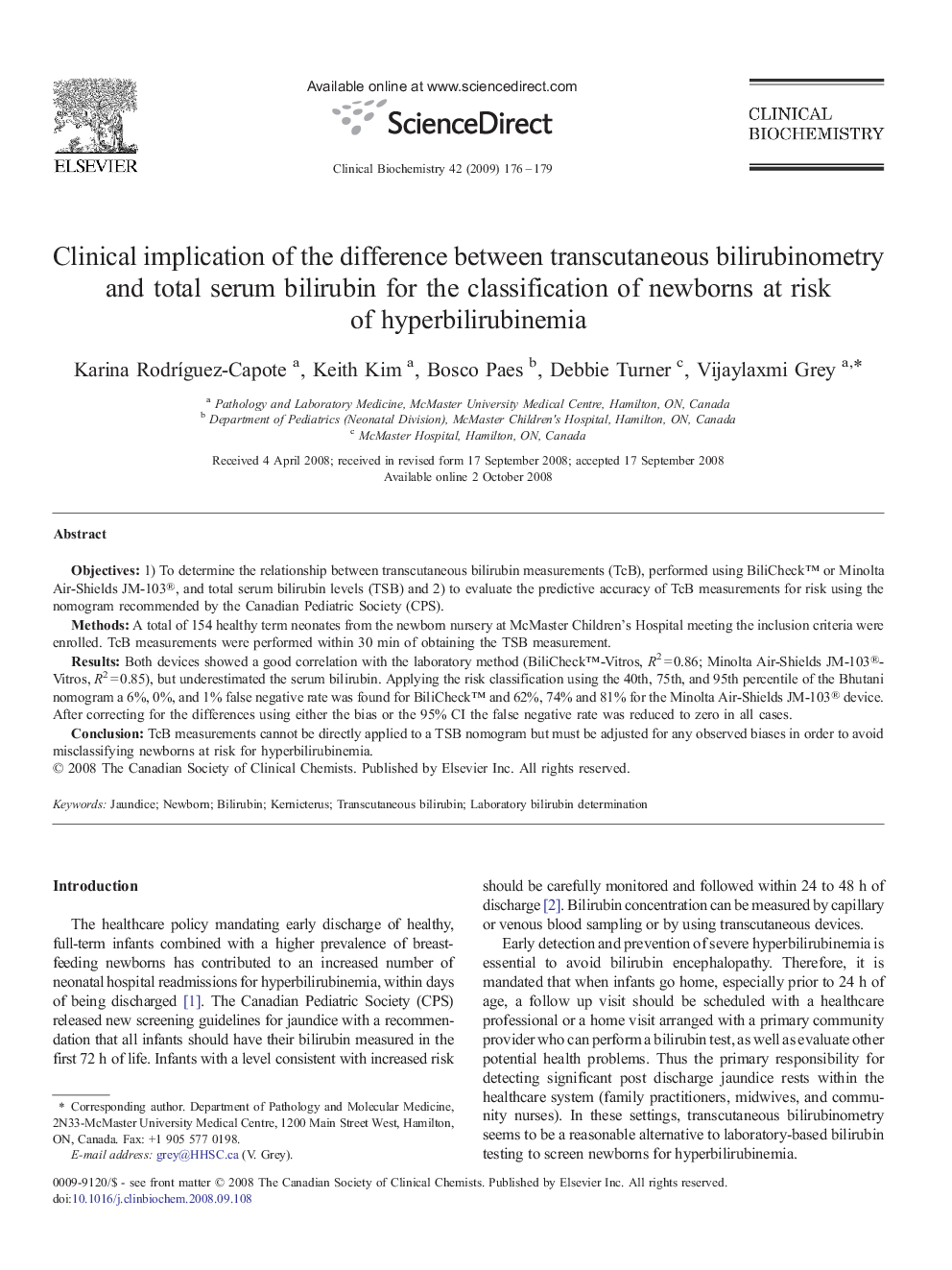| Article ID | Journal | Published Year | Pages | File Type |
|---|---|---|---|---|
| 1969964 | Clinical Biochemistry | 2009 | 4 Pages |
Objectives1) To determine the relationship between transcutaneous bilirubin measurements (TcB), performed using BiliCheck™ or Minolta Air-Shields JM-103®, and total serum bilirubin levels (TSB) and 2) to evaluate the predictive accuracy of TcB measurements for risk using the nomogram recommended by the Canadian Pediatric Society (CPS).MethodsA total of 154 healthy term neonates from the newborn nursery at McMaster Children's Hospital meeting the inclusion criteria were enrolled. TcB measurements were performed within 30 min of obtaining the TSB measurement.ResultsBoth devices showed a good correlation with the laboratory method (BiliCheck™-Vitros, R2 = 0.86; Minolta Air-Shields JM-103®-Vitros, R2 = 0.85), but underestimated the serum bilirubin. Applying the risk classification using the 40th, 75th, and 95th percentile of the Bhutani nomogram a 6%, 0%, and 1% false negative rate was found for BiliCheck™ and 62%, 74% and 81% for the Minolta Air-Shields JM-103® device. After correcting for the differences using either the bias or the 95% CI the false negative rate was reduced to zero in all cases.ConclusionTcB measurements cannot be directly applied to a TSB nomogram but must be adjusted for any observed biases in order to avoid misclassifying newborns at risk for hyperbilirubinemia.
